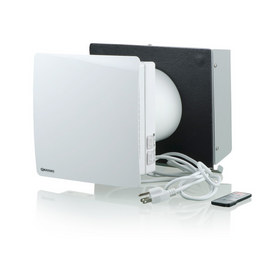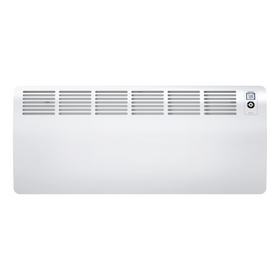
2021 Sustainable Bedroom Trends: Rest Easy With This Guide
Last Updated: Feb 23, 2025The average adult sleeps (or is recommended to sleep) between seven and nine hours a day. That means that as adults, we'll spend approximately 229,961 hours during our lifetimes sleeping; in other words, about one-third of our lives. Is anyone willing to bet that those hours have increased in 2020 since the COVID-19 pandemic started? And, we're not only cozying up in our bedrooms for rest and escape from the perils of the world, but we're also curling up on the couch to catch some extra shut-eye.
While a vaccine will be available soon and life may return to some semblance of "normal," we may long feel the pandemic's impact on our lifestyles. The need to incorporate sustainable products and materials into any home renovations or décor project to decrease our impact and mitigate climate change is critical. Never has this been truer than for bedrooms, in which we spent so much time relaxing, resting, and replenishing.
To rest easy and responsibly, here's a look at how to incorporate beauty, comfort, and convenience into bedrooms in 2021, with minimal damage to our health and natural resources.
Table of Contents
- How Do You Create a Positive Bedroom Environment?
- How Do You Know if Furniture Is Non Toxic?
- What Kind of Carpet Is Good for Bedrooms?
- Are Flame Retardants Toxic?
- How Do You Know if Paint Is Safe?
- Do Air Purifiers Work in Bedrooms?
- Are Mattresses Really Toxic?
- How Can I Make My Bed More Comfortable?
- Style: Simple, Sustainable
How Do You Create a Positive Bedroom Environment?
The sustainable bedroom of 2021 begins with zero (or as few as possible) artificial materials and products. According to a statement from the Environmental Protection Agency, the indoor air in a typical US home is two to five times more polluted than the air outside. If we can't breathe easy while we're sleeping - when we're at our most relaxed and vulnerable - then when can we?
So, do your best to eliminate all plastics and other polymers and choose furniture, carpet, paint, and mattresses carefully. Also, consider purchasing an air purifier to mitigate dust, dander, allergens, and viruses from your sleeping space. We go into detail on each of these below.

How Do You Know if Furniture Is Non Toxic?
Make sure your wood furniture is free of toxins. Conventional plywood contains urea-formaldehyde, which off-gasses toxic fumes. Look for products made with formaldehyde-free plywood or solid wood or furniture constructed with FSC-certified wood.
Solid bamboo is an excellent alternative for furniture and floors. So is reclaimed hardwood. Cork is also great for flooring or walls.

What Kind of Carpet Is Good for Bedrooms?
If you're set on choosing carpet, consider wool, which is soft, durable, and non-toxic. Remember that carpet collects dust, dirt, and hair and thus needs regular deep cleaning. Carpeting's glue and foam backing can off-gas Volatile Organic Compounds (VOCs)—unless, of course, you choose low- or zero-VOC carpet. On the upside, carpet can be recycled at the end of its working life.
Select natural fabrics when choosing curtains and bedding. Cotton, wool, and bamboo are good options.
Are Flame Retardants Toxic?
Your bedroom furnishings should also be free of other toxins, including flame retardants. Chlorofluorocarbons and hydrochlorofluorocarbons (which deplete ozone) are a no-no. Pesticides and wood preservatives, heavy metals (including lead, mercury, cadmium, and nickel), and phthalates are all on the do-not list.

How Do You Know if Paint Is Safe?
Select low-VOC or no-VOC paints and stains for walls, ceilings, furniture, and floors. As Greg Snowden, owner of Green Fusion Design Center in California, told HGTV, "a bucket of traditional paint [is like buying] a bucket of petrochemicals."
Added Anna Sova, who designs and sells her sustainable products through annasova.com, "Painting with traditional latex is basically like stretching a sheet of plastic across the room." Milk paint is a non-toxic option. So is zero-VOC paint from Valspar's Simplicity line, Natura by Benjamin Moore, and SPARTAZERO by Dunn Edwards Paints. Check out Rise's complete guide to no- and low-VOC paint here.

Do Air Purifiers Work in Bedrooms?
To enhance healthy indoor air quality, install operable windows for natural ventilation, HEPA filters in vacuums, and a ceiling fan to circulate hot and cool air. An air purifier in the bedroom will remove contaminants. Purifiers can also remove dust, allergens, smoke, and VOCs that pose health risks—whether you or not you suffer from allergies. There are many effective purifiers out there, so remember to do your research and choose one that works best for your household.

Are Mattresses Really Toxic?
We'd all love to sleep in an "organic" bed, right? But what does that mean exactly? An "organic" label doesn't necessarily indicate the mattress is 100% organic; a 100% organically made and processed mattress costs a fortune. What are the rest of us to do?
The industry might label a mattress "organic" if the manufacturer uses "eco-friendly" or natural materials. Or if the manufacturing process incorporates techniques considered sustainable. Or if the manufacturer made the mattress without using toxic chemicals.
In order to avoid greenwashing, mattresses should have one or more of these certifications:
- CertiPUR-US Certification (applies to mattress foams) is considered the minimum requirement for non-toxic mattresses.
- UL GREENGUARD Certification tests for emissions of volatile chemical compounds that can cause respiratory illnesses, memory impairment and are linked to smog and ozone pollution.
- Organic Content Standard 100 is based on the percentage of certified organic materials used by the manufacturer.
- Oeko-Tex Standard 100 is a combination of CertiPUR-US and Greenguard. It sets tight emission limits for volatile chemical compounds and bans several chemical retardants, colorants, dyes, and allergens that can severely harm your health.
Mattresses that meet some of these qualifications include PlushBeds, Saatva, and Eco Terra.

How Can I Make My Bed More Comfortable?
Now to bedding. A quick search will show you many options: fair-trade pillows and pillows stuffed with vegetable fibers, buckwheat hulls, and wool; organic cotton sheets; comforters made with biodegradable fill are just a few examples.
Organic cotton is affordable, breathable, easy to clean, and is free of fertilizers or pesticides. Still, bear in mind that its production requires more water than regular cotton.
Eucalyptus bedding is one product with less environmental footprint than cotton, as it requires ten times less water. Eucalyptus is also resistant to mold, dust, and insects. Sheet and Giggles have several options. Also, consider organic hemp and linen. Cozy Earth has bamboo bedding.

Companies including West Elm and Boll and Branch are known for their organic bedding lines. The companies Buffy and Under the Canopy sell bedding products produced from recycled water bottles. Even Target now offers "organic bedding."
Money Saving Home Improvement Products
Shop home improvement products that directly contribute to saving money through their use, whether through energy savings or lower maintenance costs.

Vents TwinFresh Comfo RA1-50-2 Ductless Energy Recovery Ventilator
Vents
In Stock

AFM Safecoat Almighty Adhesive Case of 12
AFM Safecoat
In Stock

Emporia Level 2 48 AMP EV Charger UL Listed
Emporia
In Stock
2 Colors

Stiebel Eltron CON 300-2 Premium Wall-Mounted Convection Heater - 202030
Stiebel Eltron
In Stock

Stiebel Eltron Accelera 300 E Heat Pump Water Heater
Stiebel Eltron
In Stock

Santa Fe Compact70 A2L Dehumidifier
Santa Fe
In Stock

AFM Safecoat 3 in 1 Adhesive
AFM Safecoat
In Stock

Google Nest Learning Thermostat
In Stock
6 Colors

Stiebel Eltron DHC-E 8/10-2 Plus Point-of-Use Electric Tankless Water Heater - 202145
Stiebel Eltron
In Stock

Stiebel Eltron CON 150-1 Premium Wall-Mounted Convection Heater - 202026
Stiebel Eltron
In Stock

Weekly maintenance can keep your bedding clean and fresh. Wash your bedding every week to cut down on any accumulation of mold, mildew, and dust mites. Allergy suffers: Seek out hypoallergenic and organic pillows filled with wool, cotton, millet hulls (99 percent dust-free), buckwheat, or Kapok (a natural seed fiber).
Style: Simple, Sustainable
Sustainable style in the bedroom, like everywhere else, focuses on your health, the environment, and reducing consumption. So focus on simplicity, natural products, and unique furnishings, both new and pre-loved.

Consider purchasing locally crafted furnishings made from reclaimed materials or one-of-a-kind items found at thrift or consignment shops. Refurbish old headboards, side tables, or bureaus with a new coat of milk paint. Natural fabrics, real wood furniture, and smart dimmable lighting with LEDs contribute to a clean, fresh, sustainable bedroom aesthetic.

To help cleanse and freshen indoor air, and add a "green" element, add several live plants to your bedroom décor. The best clean, oxygenated indoor air plants are bamboo, snake plants, weeping fig, spider plants, areca palms, and pothos plants.
When designing or revamping a bedroom to be more healthy and sustainable, the possibilities are endless. If you do your research, ask questions, have fun discovering local and reused items, and keep your priorities set to sustainable, you'll soon have the bedroom of your dreams. You'll also have a haven for rest, relaxation, and respite—so well deserved and necessary whether or not we're experiencing a pandemic.
Camille LeFevre
Camille LeFevre is an architecture and design writer based in the Twin Cities.
